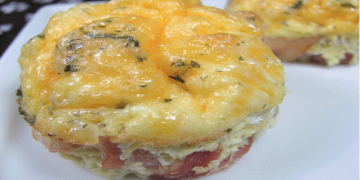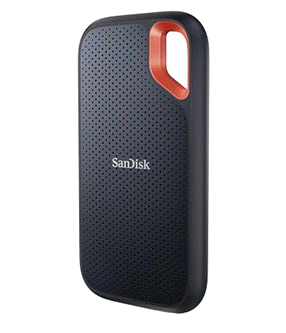2025-06-25 16:01:00
www.quantamagazine.org
Achieving the right balance between the weight of the loading zone and the weight of the rest of the tetrahedron is easy in the abstract realm of mathematics — you can define the weight distribution without a care for whether it’s physically possible. You might, for instance, let parts of the shape weigh nothing at all, while concentrating a large amount of mass in other parts.
But that wasn’t entirely satisfying to the mathematicians. Almádi, Dawson and Domokos wanted to hold the shape in their hands. Was it possible to make a monostable tetrahedron in the real world, with real materials?
Getting Real
The team returned to their computer search. They considered the various ways in which monostable tetrahedra might tip onto their stable face. For instance, one kind of tetrahedron might follow a very simple path: Face A tips to Face B, which tips to Face C, which tips to Face D. But in a different tetrahedron, Face A might tip to Face B, and both Face B and Face D will tip to Face C.
The loading zones for these different tetrahedra look very different. The team calculated that to get one of these “falling patterns” to work, they would need to construct part of the shape out of a material about 1.5 times as dense as the sun’s core.
They focused on a more feasible falling pattern. Even so, part of their tetrahedron would have to be about 5,000 times as dense as the rest of it. And the materials had to be stiff — light, flimsy materials that could bend would ruin the project, since it’s easy to make a round or smooth shape (like the roly-poly) monostable.
In the end, they designed a tetrahedron that was mostly hollow. It consisted of a lightweight carbon fiber frame and one small portion constructed out of tungsten carbide, which is denser than lead. For the lighter portions to have as little weight as possible, even the carbon fiber frames had to be hollow.
With this blueprint in hand, Domokos got in touch with a precision engineering company in Hungary to help build the tetrahedron. They had to be incredibly accurate in their measurements, even when it came to the weight of the tiny amounts of glue used to connect each of the shape’s faces. Several frustrating months and several thousand euros later, the team had a lovely model that didn’t work at all. Then Domokos and the chief engineer of the model spotted a glob of stray glue clinging to one of its vertices. They asked a technician to remove it. About 20 minutes later, the glue was gone and Almádi received a text from Domokos.
“It works,” the message read. Almádi, who was on a walk, started jumping up and down in the street. “Seeing the lines on the computer is very far from reality,” he said. “That we designed it, and it works, it’s kind of fantastic.”
“I wanted to be an architect,” he added. “So this is still very strange for me — how did I end up here?”
In the end, the work on monostable tetrahedra didn’t involve any particularly sophisticated math, according to Richard Schwartz of Brown University. But, he said, it’s important to ask this kind of question in the first place. It’s the kind of problem that’s often easiest to overlook. “It’s a surprising thing, a leap, to conjecture that these things would exist,” Schwartz said.
At the moment, it’s not clear what new theoretical insights the model of the monostable tetrahedron will provide — but experimenting with it might help mathematicians uncover other intriguing questions to ask about polyhedra. In the meantime, Domokos and Almádi are working to apply what they learned from their construction to help engineers design lunar landers that can turn themselves right side up after falling over.
In any case, sometimes you just need to see something to believe it, Schwartz said. “Even for theoretical math, geometry especially, people are kind of right to be skeptical because it’s quite hard to reason spatially. And you can make mistakes, people do.”
“Conway didn’t say anything about it, he just suggested it — never proved it, never proved it wrong, nothing. And now here we are, I don’t know, 60 years later,” Almádi said. “If he were still alive, we could put this on his desk and show him: You were right.”
Keep your files stored safely and securely with the SanDisk 2TB Extreme Portable SSD. With over 69,505 ratings and an impressive 4.6 out of 5 stars, this product has been purchased over 8K+ times in the past month. At only $129.99, this Amazon’s Choice product is a must-have for secure file storage.
Help keep private content private with the included password protection featuring 256-bit AES hardware encryption. Order now for just $129.99 on Amazon!
Help Power Techcratic’s Future – Scan To Support
If Techcratic’s content and insights have helped you, consider giving back by supporting the platform with crypto. Every contribution makes a difference, whether it’s for high-quality content, server maintenance, or future updates. Techcratic is constantly evolving, and your support helps drive that progress.
As a solo operator who wears all the hats, creating content, managing the tech, and running the site, your support allows me to stay focused on delivering valuable resources. Your support keeps everything running smoothly and enables me to continue creating the content you love. I’m deeply grateful for your support, it truly means the world to me! Thank you!
|
BITCOIN
bc1qlszw7elx2qahjwvaryh0tkgg8y68enw30gpvge Scan the QR code with your crypto wallet app |
|
DOGECOIN
D64GwvvYQxFXYyan3oQCrmWfidf6T3JpBA Scan the QR code with your crypto wallet app |
|
ETHEREUM
0xe9BC980DF3d985730dA827996B43E4A62CCBAA7a Scan the QR code with your crypto wallet app |
Please read the Privacy and Security Disclaimer on how Techcratic handles your support.
Disclaimer: As an Amazon Associate, Techcratic may earn from qualifying purchases.




















































































![Conquest of Space / I Married a Monster from Outer Space [Blu-ray]](https://techcratic.com/wp-content/uploads/2025/09/81Yx1UahVuL._SL1500_-360x180.jpg)



















